The Difference between Fat Bike vs Road Bike: Which One You Should Choose?
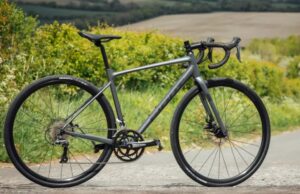 A bicycle is the epitome of freedom of movement. It does not require a license and gasoline, it is inexpensive and unpretentious to use. Every cyclist is familiar with the feeling of excitement that a bike gives.
A bicycle is the epitome of freedom of movement. It does not require a license and gasoline, it is inexpensive and unpretentious to use. Every cyclist is familiar with the feeling of excitement that a bike gives.
Among all the variety of bicycles on the market, road models rightfully occupy a leading position. But they are not designed for off-road riding like fatbikes. Before choosing, you need to clearly understand what advantages and disadvantages each type of bike has.
And speaking in general, the chosen transport is able to give the owner maximum drive and ease of riding, significantly improve health, as well as give the opportunity to see a lot of interesting and remote places.
What is a fatbike?
Fatbike is a new round in the evolution of the mountain bike or just someone decided to reinvent the bike? Let’s sort out what a fatbike is, as well as who and what it is suitable for.
Fatbikes are off-road vehicles equipped with thick wide tires. Fatbikes have high cross-country ability and can be ridden freely on any off-road terrain and in any weather: snow, sand, roots, mud, rocky ground – all these obstacles are not terrible for fatbike owners.
This bike is perfect for people who want to enjoy riding no matter the season. Fatbikes have good cross-country capability, not only on cross-country – the part of mountain bikes.This bike takes you south to the deserts, north for some arctic winter sports or simply straight off-road.Hence the other name of the Fatbike – snowbike, i.e. “snow bike”.
How it begin producing
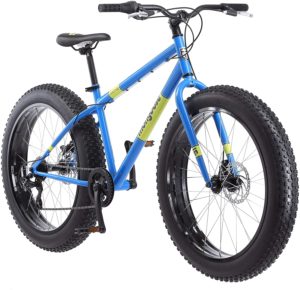
The first mention of the Fatbike is found in an American bicycle publication back in 1932. One of the issues depicted a man on a bicycle with thick wheels. But in those days few people took the revolutionary idea seriously.
The official father of the fatbike is Mark Grunwald, and the birthplace is Alaska. The inventor stretched 3-inch tires over 80-millimeter rims to 3.5 inches wide for the first time in history.
The resulting bike rode well in the snow, which, incidentally, was its main task. Mark also came up with the name Fatbike.
The first fatbike serial production was the famous Surly Pugsley, which revolutionized the world of bicycles. To date, there are many models of Fatbikes on different equipment with the latest technology: carbon and titanium frames, soft shock absorption and rigid rigid forks, rims and other components. The mass popularization of bicycles with mountain bike character and high cross-country ability is not surprising: the Fatbike is truly unique.
Features
But thick wheels, that’s not the main thing fatbikes. Low tire pressure is the primary benefit achieved by using big tires (which sometimes exceed 5.5 inches) and wide rims (ranging from 65-100 mm). By utilizing these components, you can keep chamber pressure between .5 atm and 2 atm.
The main advantage of the “fatbike” or, as written above, snowbike is also the main disadvantage. However, the larger wheels of a fat bike require twice (if not more) force than mountain bike wheels to push against the earth. Yes, one fetal wheel weighs 3 kg! However, manufacturers have found methods to reduce this weight. They drill holes in the rim of the wheel, for example.To a minor extent, the lack of need for shock-absorbing suspension for fat is offset by the lightness. They usually have a front fork with shock absorber, but there’s no need for it because travel is so soft without it that even high-end 2-saddle with excellent suspension will be a stool in comparison with a sofa.
Read also:
Looking for your First Roadbike? Try out the GT Grade Carbon 105
Gravel bikes and road bikes: What’s the difference?
Best Road Bike for Triathlon – Bianchi Aria Aero Road Review
For most bikers, how fat the bike is matters more than how well it can handle all types of terrain. Especially noticeable is the difference on gravel, and other small bumps in the road, making the mountain bike and whoever is sitting on it shake.
Another benefit of the Fatbike is its unusual design. Even though they weren’t here yesterday, there are still very few of them and you won’t be deprived of attention from pedestrians or drivers.
Is it difficult to ride?
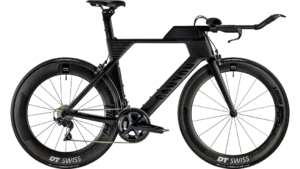
Although it appears that riding a fetbike is extremely difficult. It isn’t. Modern fetbikes are stable and reliable. No matter the size of the wheels, a fetbike is still similar to a standard bike.
Thanks to having the same type of transmission, it’s easy to find the right gear ratio for a comfortable ride–whether you’re in town or on difficult terrain. A fatbike is designed for low speeds and will become increasingly difficult to pedal the faster you go. If you need a bike for high speeds, a fatbike is not the right choice.
- Excellent cross-country ability
- Stability
- Manageability
- High cost of components and parts;
- Not designed to ride on level ground;
- High weight.
But even here there is a solution – electric fatbike. It’s the same bike, but with a motor inside the wheel or in the carriage unit, and the battery on the frame or bike rack. Optimally, of course, when the battery is located in place of the bottle.
Additionally, it looks more ergonomic and has a lower center of gravity. Furthermore, it’s easy to take off and charge. Plus, you don’t have to move the entire bike when the battery needs charging like you do with models that have batteries built into the frame–which are incidentally more expensive.
The electric motor will make the bike heavier, but you won’t notice it except when picking the bike up or when the battery needs to be recharged. Pedals at elektrofet, by the way, will remain, and you can go with a discharged battery, just by spinning them.
In contrast to mountain biking, which can make the rider feel unsteady and causes some to walk instead, fat biking feels natural.
The advantages of electric fatbike on the face – high speed. A battery charge (based on the capacity and intensity of riding, naturally) sufficient for a ride of up to 100 kilometers. Remembering about the ability to exploit the motor’s power as assistance while cycling, which is rather helpful. Alternatively, you may cycle home exhausted of pedaling after riding alone.
Why would you need a fatbike?
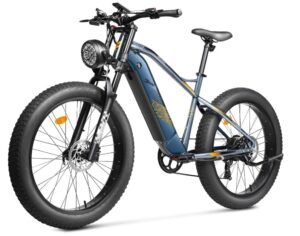 You might believe that a bike with such huge wheels is only for those who want to ride into the middle of nowhere at first. That isn’t quite accurate, though. Consider how often you come across snowdrifts, muck, sand, rocks, curbs, and other roadblocks that you can’t overcome on a normal bike?
You might believe that a bike with such huge wheels is only for those who want to ride into the middle of nowhere at first. That isn’t quite accurate, though. Consider how often you come across snowdrifts, muck, sand, rocks, curbs, and other roadblocks that you can’t overcome on a normal bike?
A Fatbike can do it all; simply lower the tire pressure by half and you’re good to go.
The ability to inflate the tires to your desired pressure is also beneficial. I pumped up the chamber and rode it at a leisurely pace on city asphalt streets. As a result, the use of this bike in cities with strong wheels has advantages.
For example, riding down steps and over obstacles on this bike is considerably simpler than on a regular bicycle because of fathbike’s increased mobility. You would never think of moving down stairs on a normal bike, so with fathbike, you’re opening up new frontiers in the battle for “stone jungle,” which will provide an exciting sensation, emotions, and good vibes.
This bike piques your interest to try new things, something you’ve always avoided. If you’re a seasoned biker, you’ll be itching to get going. And in the winter, it will want to ride around town since it is one color alone. Consider the look of this bike. Even if they claim so, it looks fantastic. It’s so big and magnificent that passers by and drivers envy it. It isn’t modest about displaying itself to others on the road . Every cyclist wants to drive something like this.
Buying a fatbike is an excellent method to lose weight! Riding with half-deflated cams on difficult terrain is still quite strenuous! You burn a lot of calories in one ride. So, if you don’t mind the bike’s weight and aren’t searching for high speed, it may be worthwhile investing in a bike with thick wheels, which may be precisely what you’re looking for! Sales figures show that fatbikes are becoming increasingly popular, and they are increasing.
Road Bike Features
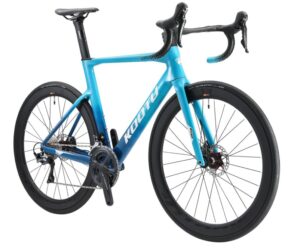 The lightest bikes belong to this type. Rudder, visually resembling “ram’s horns”, light alloy thin frame, narrow (18-25 mm) and smooth tires with high pressure. Sleek chauffeurs are increasingly common on the roads of metropolitan areas – a good alternative to any other mode of transport.
The lightest bikes belong to this type. Rudder, visually resembling “ram’s horns”, light alloy thin frame, narrow (18-25 mm) and smooth tires with high pressure. Sleek chauffeurs are increasingly common on the roads of metropolitan areas – a good alternative to any other mode of transport.
They are used for participation in cycling races on the highway. The characteristic features of the highway are – light weight, ram-shaped handlebars and ultra-thin tires – slicks.
Such bikes have increased aerodynamic properties, so they can ride at high speeds. However, riding this type of bicycle requires a good road surface, as they are not suitable for off-road riding.
- Small weight (5-8 kg)
- High speed on a good road
- Despite the fragile at first glance design
- Smooth tires
- Low riding position
- Thin frame
Why do I need a road bike?
There are a number of reasons to buy a road bike. The first reason is practical: you are a cyclist or triathlete and you need one to achieve results. The second reason is physical fitness (echoing the first): such a sport tool can not only improve the body’s cardio and develop general endurance, but also, because it brings a fair amount of pleasure, directly motivate you to exercise, which many people quite often have problems with.
The third reason is emotional: you’re a thrill-seeker, you long for a sense of flight and feel the need for a periodic injection of adrenaline and endorphins into the body (it sounds a little scary, but road bike is a kind of drug, though, of course, without the tragic consequences, but the opposite), and all this you get from a good road bike. And finally, it’s a good (and rewarding) way to spend your free time, and it’s great if your friends share your fondness.
Criteria for choosing a road bike
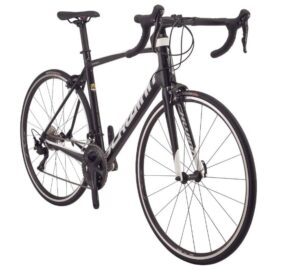 Why – it’s clear. After all, “yes just want!” But how to choose? You can, of course, unpretentious proceed from the budget, because in most cases, indeed, the more expensive – the better.
Why – it’s clear. After all, “yes just want!” But how to choose? You can, of course, unpretentious proceed from the budget, because in most cases, indeed, the more expensive – the better.
But let’s try to approach this question in a more intricate way and determine some criteria that will help you make a rational choice.
First you need to decide where, how and how much you intend to ride. If you’re a beginner shosser who hasn’t even decided how intensely you’re going to use the bike, and whether you’ll like it at all, then we recommend looking at an entry-level bike.
Even a relatively inexpensive aluminum roadster will give you the opportunity to feel the difference in speed and sensations compared to other types of bikes, allowing you to save money and, importantly, leaving room for upgrade, which in the future will maintain the sharpness and novelty of sensations (well boring to start with the best, you even do not understand what its beauty in comparison with the “not best”).
But if you’re aiming for a sporty result or to raise the level of your road bike, you need to pay attention to specific parameters. The main components that determine the level of a bike are the frame, equipment and wheels – it’s these that mainly determine its performance on the track.The frame and fork are the load-bearing structure of the bike, and it is on them that the “feel of the ride” that you get on the road depends. For a road bike, lightness and stiffness are important to make sure it has an explosive feel when you’re going fast and keeping it fast. Lightness because, naturally, it takes less effort to accelerate a lighter bike.
And stiffness because, as mentioned above, the stiffer the frame, the more energy applied to the pedals it transfers directly to the drive wheel without absorbing it into the flexibility and cushioning. This is why today’s road bikes are made primarily of carbon fiber (carbon fiber reinforced plastic), which provides unparalleled lightness and stiffness, far superior to both steel and aluminum, which were used to make bikes in the past.
However, carbon is not the same as carbon, and, for example, the entry-level model is not made of the same material as the top model – this or that carbon has different technical characteristics (the same lightness, stiffness, specificity and geometry of the carbon fiber layers), which have their own price.
Road bike frame
Lightness and stiffness are by no means the only criteria for bike quality, though. And here we come back to the very “ride feel” that we mentioned. A good manufacturer, with years of experience and secrets of excellence in the production of sports bikes, not only magically knows how to give a unique feeling when riding his bike, but also carefully calculates the arrangement of carbon fiber layers so that carbon provides not only torsional stiffness, but also, paradoxically, vertical pliability, which provides comfort when riding.
 The same selection criteria apply to the wheels. Lightness and stiffness are also important for them, and additional parameters may include reliability and quality of hub rotation, as well as rim height and shape, which may be specific for certain types of riding.
The same selection criteria apply to the wheels. Lightness and stiffness are also important for them, and additional parameters may include reliability and quality of hub rotation, as well as rim height and shape, which may be specific for certain types of riding.
If we talk about the equipment (transmission) of the bike, then here everything is quite uncomplicated: each manufacturer has a model line, in which groups of equipment (switches, brakes, chain, connecting rod system) are arranged according to rank – the more expensive group, the easier, better work and provide more accurate and clear switching speeds and braking its components.
And do not forget that the bike is not a car and it must be matched to the height. Virtually every sportbike model has a unique geometry (tube lengths and joint angles) and a unique size range, depending on which the height parameters are selected. To understand the nuances of geometry and compliance with the height of a particular person is often difficult, even for many of those who think they are among the “initiated”, so for recommendations on the selection of road bike size is better to ask an expert (a real expert, with experience, reputation and recommendations).
Difference between these two types of bikes
What is the difference between a fat bike and a road bike, anyway? Here’s a brief explanation of each: Fat bikes have larger tires than road bicycles. On rough terrain, they have better traction and stability because to this. Fat bikes are also generally heavier than road bicycles, making pedaling uphill more difficult.
Road bikes have narrower tires that are designed for pavement riding. They’re usually lighter than fat bikes, making them easier to pedal over long distances.
So, which type of bike is right for you? It depends on where you’ll be riding most often. If you’re planning on sticking to smooth surfaces, a road bike is your best bet. Road bikes are faster and more efficient on pavements or other even streets.
Bottom Line
However, if you’re interested in exploring off-road trails or riding in snow, a fat bike may be a better option. Fat bikes can handle rough terrain and provide extra traction in slippery conditions.
No matter which type of bike you choose, make sure to test ride it before you buy it. This will help you make sure that the bike feels comfortable and that it’s the right size for your body.